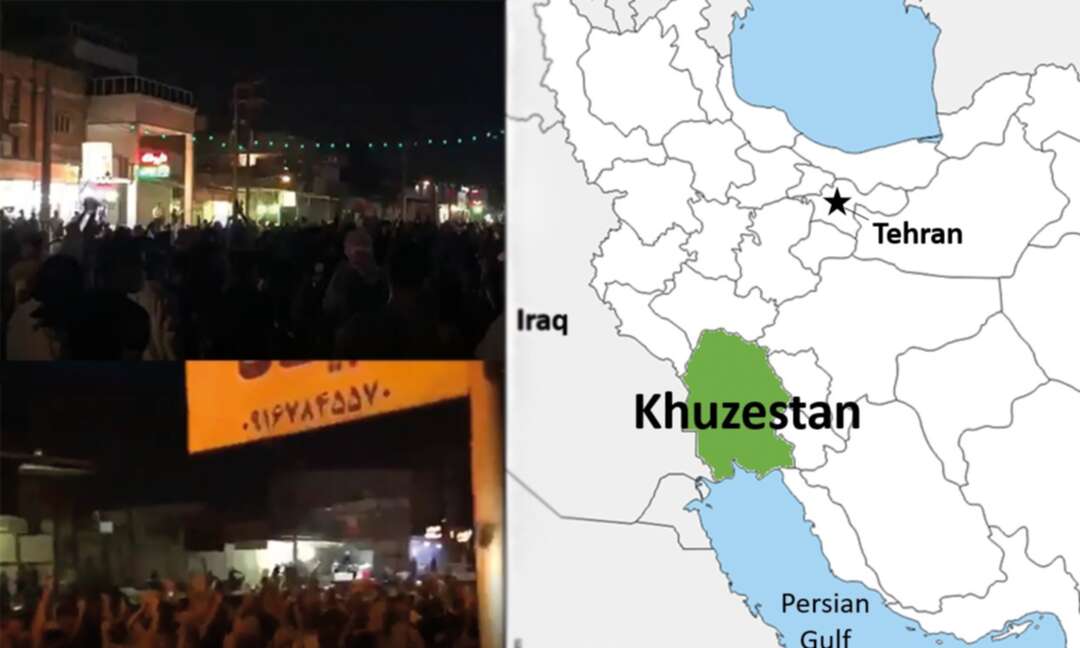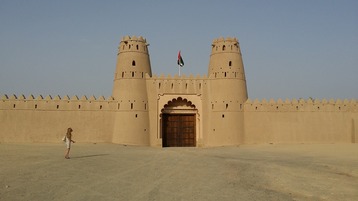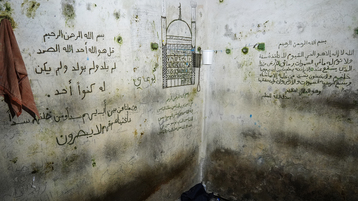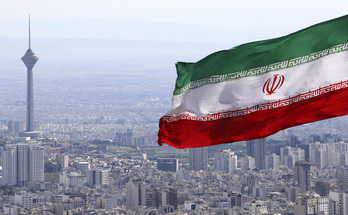-
The uprising of the people of Khuzestan due to water shortages.

The existence of this number of rivers has played a decisive role in the development of this region. The people of this region have been engaged in agriculture, animal husbandry, and fishing since ancient times, using the fertile lands around these rivers.
After the discovery of Iran's first oil reserves in this region, it became the richest province in Iran and the largest refinery in the Middle East was built in the city of Abadan.
But due to inadequate governments both during the Pahlavi era or after the arrival of Khomeini, the people of this province throughout these years has always been deprived of this wealth. The former government ceded oil to Britain almost for free in order to maintain its rule and the latter followed so-called Islamic expansionist policies to export its so-called Islamic revolution, cause the war between Iran and Iraq, which destroyed most of the cities in this province
After Khamenei came to power, since his most important agenda was to maintain his grip on power, he gradually handed over most of the country's affairs, including Iran's important economic institutions, to Iran’s Revolutionary Guards Corps (IRGC), a military force loyal to and dependent on him.
Today 90% of Iran's economy is under IRGC’s control. But since the commanders and officials of the IRGC are mostly people without classical education and expertise, their control over the Iranian economy destroyed Iran's economic infrastructure. In addition to plundering Iran's capital and wealth, they are only concerned with expanding the regime's military, missile, and nuclear industries and financing proxy and terrorist forces in the region. Thus, they have not paid attention to the reconstruction of any other infrastructures in the country.
But since the Dam construction was one of the profitable projects for the IRGC, during the last 30 years, the IRGC has built hundreds of dams in different parts of Iran through its Khatam al-Anbia construction base. However, since the construction of these dams was without any study or research on the climatic and geographical effects and is done only for the financial interests of the IRGC (for use in industries or irrigation of agricultural lands of companies and factories affiliated to the IRGC) in most cases the construction of these dams has caused irreparable damage to environment and the villages around them.
During the last 30 years, 170 dams have been built on the Karun and Karkheh rivers, which are the most important rivers in this province and Iran. Due to the extreme heat in this region in summer, with temperatures of above 45 degrees Celsius for a few months, a large amount of water collected behind these dams evaporates due to heat and is wasted without any use.
The construction of this number of dams on these rivers have caused a shortage of running water in the lower parts of these rivers and 25% of the population of this province of 5 million who have been engaged in agriculture and animal husbandry in the villages are facing severe water shortage for irrigation and their livestock are dying due to severe dehydration. Last winter and spring, the amount of rainfall in Iran was almost half of the previous year, this problem was exacerbated so that now in large parts of the province there is no water even for drinking and other essential uses.
Prior to this problem, the people of this province were facing continuous power outages in the scorching heat above 50 degrees. On the other hand, the COVID-19 pandemic has caused widespread deaths due to the incompetence of the regime and the lack of vaccines. These factors, in addition to unemployment and skyrocketing prices due to inflation rate above 50% and corruption in all governing institutions have exhausted the patience of the people of this province, which has resulted in the revolt of young people in different cities of the province in recent days.
The protests began on July 16, lasted for four days in a row, and still continues. In many cities of the province, young people have taken to the streets in protest of the current situation, which has made life almost unbearable, blocking various traffic routes between the cities by burning tires and clashing with police. In the city of Susangerd on July 18, the people chanted slogans calling for the overthrow of the regime.
Reports indicate that the situation is critical in the cities of Susangerd, Shousha, Mahshahr, Dasht-e Azadegan, Shadegan, Hamidiyeh, Zargan, Behbahan, and other cities of the province, and counter-insurgency forces have been deployed in all these cities. Up to now, 4 young men,26-year-old Mustafa Naimavi in Shadegan, 17-year-old Qassem Kheziri in Kut Abdullah, Seyed Hossein Al-Nasser in Susangard, and Ali Mazrae in Zoyeh quarter in Ahvaz were killed by direct fire by security forces.
It is worth mentioning that the cities of this province, especially Behbahan, Mahshahr, Masjed Soleiman, Hamidiyeh in the November 2019 uprising, which took place due to the increase in gasoline prices, witnessed widespread protests against the regime, calling to overthrow Khamenei. But in the end, Khamenei, using bloodied suppression by his security forces and the Revolutionary Guards, and even helicopters and tanks, and killing dozens of people managed to regain control of these cities.
For this reason, IRGC commanders are very afraid of the people of these cities populated with an Arabic-speaking minority. Considering the dissatisfaction of people of other cities in Iran with their current situation, IRGC is afraid that the people of other cities will rise up in support of the people of Khuzestan and join them. The youth of Mashhad and Isfahan already supported the uprising of the people of Khuzestan in their protest rallies in recent days. It seems, with the heat of protests momentarily rising, repression will no longer be easily possible.
As a result, the regime is trying to prevent the uprising from spreading on the one hand by quickly suppressing the people, and on the other hand, by making promises and opening the dams and pouring some water in the rivers to temporarily calm the situation in this area.
But since the entire regime is based on corruption and incompetence, such solutions will not be able to satisfy the people who clearly demonstrated their opposition to the regime in the recent sham presidential election with massive boycotts. One will have to wait for uprisings of this kind in other parts of Iran in the near future as well. levant
levant
by: Cyrus Yaqubi
Cyrus Yaqubi is a Research Analyst and Iranian Foreign Affairs Commentator investigating the social issues and economy of the middle east countries in
You May Also Like
Popular Posts
Caricature
BENEFIT AGM approves 10%...
- March 27, 2025
BENEFIT, the Kingdom’s innovator and leading company in Fintech and electronic financial transactions service, held its Annual General Meeting (AGM) at the company’s headquarters in the Seef District.
During the meeting, shareholders approved all items listed on the agenda, including the ratification of the minutes of the previous AGM held on 26 March 2024. The session reviewed and approved the Board’s Annual Report on the company’s activities and financial performance for the fiscal year ended 31 December 2024, and the shareholders expressed their satisfaction with the company’s operational and financial results during the reporting period.
The meeting also reviewed the Independent External Auditor’s Report on the company’s consolidated financial statements for the year ended 31 December 2024. Subsequently, the shareholders approved the audited financial statements for the fiscal year. Based on the Board’s recommendation, the shareholders approved the distribution of a cash dividend equivalent to 10% of the paid-up share capital.
Furthermore, the shareholders endorsed the allocation of a total amount of BD 172,500 as remuneration to the members of the Board for the year ended 31 December 2024, subject to prior clearance by related authorities.
The extension of the current composition of the Board was approved, which includes ten members and one CBB observer, for a further six-month term, expiring in September 2025, pending no objection from the CBB.
The meeting reviewed and approved the Corporate Governance Report for 2024, which affirmed the company’s full compliance with the corporate governance directives issued by the CBB and other applicable regulatory frameworks. The AGM absolved the Board Members of liability for any of their actions during the year ending on 31st December 2024, in accordance with the Commercial Companies Law.
In alignment with regulatory requirements, the session approved the reappointment of Ernst & Young (EY) as the company’s External Auditors for the fiscal year 2025, covering both the parent company and its subsidiaries—Sinnad and Bahrain FinTech Bay. The Board was authorised to determine the external auditors’ professional fees, subject to approval from the CBB, and the meeting concluded with a discussion of any additional issues as per Article (207) of the Commercial Companies Law.
Speaking on the company’s performance, Mr. Mohamed Al Bastaki, Chairman BENEFIT , stated: “In terms of the financial results for 2024, I am pleased to say that the year gone by has also been proved to be a success in delivering tangible results. Growth rate for 2024 was 19 per cent. Revenue for the year was BD 17 M (US$ 45.3 Million) and net profit was 2 Million ($ 5.3 Million).
Mr. Al Bastaki also announced that the Board had formally adopted a new three-year strategic roadmap to commence in 2025. The strategy encompasses a phased international expansion, optimisation of internal operations, enhanced revenue diversification, long-term sustainability initiatives, and the advancement of innovation and digital transformation initiatives across all service lines.
“I extend my sincere appreciation to the CBB for its continued support of BENEFIT and its pivotal role in fostering a stable and progressive regulatory environment for the Kingdom’s banking and financial sector—an environment that has significantly reinforced Bahrain’s standing as a leading financial hub in the region,” said Mr. Al Bastaki. “I would also like to thank our partner banks and valued customers for their trust, and our shareholders for their ongoing encouragement. The achievements of 2024 set a strong precedent, and I am confident they will serve as a foundation for yet another successful and impactful year ahead.”
Chief Executive of BENEFIT; Mr. Abdulwahed AlJanahi commented, “The year 2024 represented another pivotal chapter in BENEFIT ’s evolution. We achieved substantial progress in advancing our digital strategy across multiple sectors, while reinforcing our long-term commitment to the development of Bahrain’s financial services and payments landscape. Throughout the year, we remained firmly aligned with our objective of delivering measurable value to our shareholders, strategic partners, and customers. At the same time, we continued to play an active role in enabling Bahrain’s digital economy by introducing innovative solutions and service enhancements that directly address market needs and future opportunities.”
Mr. AlJanahi affirmed that BENEFIT has successfully developed a robust and well-integrated payment network that connects individuals and businesses across Bahrain, accelerating the adoption of emerging technologies in the banking and financial services sector and reinforcing Bahrain’s position as a growing fintech hub, and added, “Our achievements of the past year reflect a long-term vision to establish a resilient electronic payment infrastructure that supports the Kingdom’s digital economy. Key developments in 2024 included the implementation of central authentication for open banking via BENEFIT Pay”
Mr. AlJanahi concluded by thanking the Board for its strategic direction, the company’s staff for their continued dedication, and the Central Bank of Bahrain, member banks, and shareholders for their valuable partnership and confidence in the company’s long-term vision.
opinion
Report
ads
Newsletter
Subscribe to our mailing list to get the new updates!





















